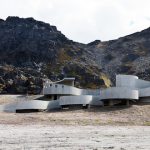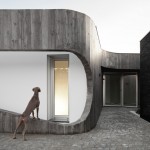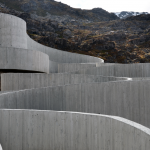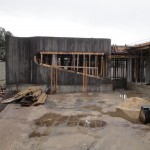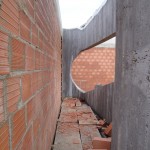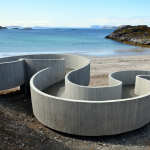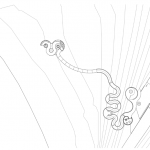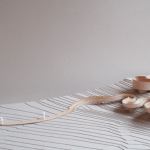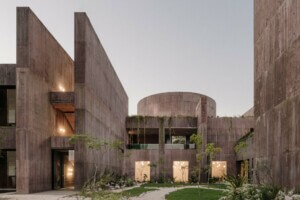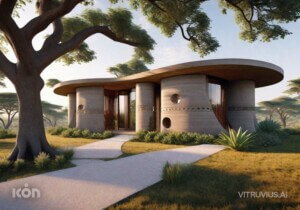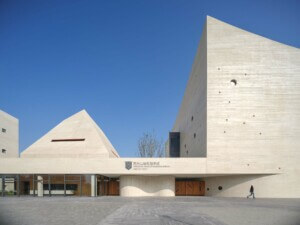Two new projects prove that concrete’s rigidity is no longer set in stone
From Peter Eisenman’s Berlin Holocaust Memorial to Paul Rudolph’s Art and Architecture building, concrete has been used with finesse in minimalist and brutalist structures and, as such, is mostly thought of as cold or aggressive. Two recent projects in Portugal and Norway are set to change our hard-edged opinion of concrete and show that it can be as fluid as a ribbon waving in the wind. Casa Xieira II, a private home in Leiria, Portugal, designed by A2 + Arquitectos, and the National Tourist Route Rv 889 Havøysund in northern Norway by Reiulf Ramstad Architects both feature winding concrete wrappers that stand out in sharp contrast to their surroundings, a factor that only becomes more important when your primary building material is as stark as concrete.
Marco Guarda, an architect at A2 + Arquitectos, described the coastal, western Portuguese city of Leiria as distinguished by “loggers and mythical forests,” a place where stone hasn’t been featured prominently in construction since the Leiria Castle was built in 1135. In contrast, the smooth, curving walls of Casa Xieira II were created by pouring concrete into a formwork made from wooden planks so that the concrete would retain the wood grain once it dried. The wood grain texture is also A2 + Arquitectos’ way of giving a nod to the surrounding forest and as well as to the homeowner, who works in the forestry sector.
Before the concrete was poured it was dyed with titanium oxide powder, a readily available dye used in everything from beauty products to food. For Casa Xieira II, Guarda and his team chose a black powder to darken the concrete to a slate grey color that highlights the wood effect. After the concrete was mixed, workers poured it into the frame, vibrating it as they went in order to shake out any air pockets or uneven areas. Once the concrete had set the planks and braces were simply removed.
For the Havøysund Tourist Route, which was just completed in June, Reiulf Ramstad Architects conducted extensive testing onsite at Selvika, a bay located along the route between Kokelv and Havøysund in Finnmark county, the northernmost area in Norway. Like A2 + Arquitectos, Ramstad also chose to emphasize the wood grain of their formwork, but instead of wide planks of wood they used narrow strips braced together tightly to make the winding effect as smooth as possible. By inserting sections of industrial pipes into the framework—leaving perfect circles when the concrete dried—portholes were created.
It was a challenge to transport all the materials from the manufacturer in Alta, a town several hours away. Selvika is as remote as it looks and extremely cold. However, this factor is also, oddly enough, what makes it a popular destination for local events and is why the Norwegian Public Roads Administration (Vegvesen) went to the trouble of constructing an artful pathway that “invites visitors to experience this remarkable place and it’s open, raw landscape.”






